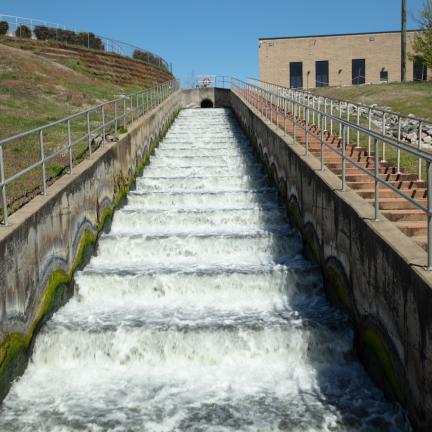Water Reclamation Process

H.L. Mooney Advanced Water Reclamation Facility
There is a five-step process that influent wastewater to the AWRF undergoes.
- First, fine screens remove rocks, food, hair, plastics and grit. At the same time, the plant adds a safe chemical to remove phosphorus.
- In the second step, microscopic bugs remove nitrogen and other dissolved substances.
- In the third step, the water travels through a deep, six-foot layer of sand to filter out any particles that still remain. Sometimes a safe chemical is added to the filters to remove additional nitrogen from the water.
- In the next step, the plant uses ultraviolet light to disinfect it. This process kills harmful bacteria and disease-causing organisms.
- Finally, the treated water travels over a series of cascades to aerate it before it is released into the Neabsco Creek, a tributary of the Potomac River.
UOSA
The Upper Occoquan Service Authority (UOSA) Regional Water Reclamation Plant undergoes a five-step treatment process of wastewater.
- In the first step, fine screens remove rocks, food, hair, plastics and grit, while heavy solids fall to the bottom of the tank.
- Secondly, UOSA uses microscopic bugs that eat tiny waste particles before separating the bugs from the water.
- In the third step, UOSA uses lime to remove phosphorus and viruses. In this step, the pH of the water is raised to 11 and, after the removal of the phosphorus, is brought to neutral using carbon dioxide gas.
- The fourth step involves filtration using sand and other media followed by activated carbon to eliminate carbon-containing substances.
- The final step involves disinfection using bleach. Once the bleach is removed, the treated water goes to an on-site reservoir owned by UOSA in order to acclimate and blend the discharge with the water found in the reservoir. Eventually, the water is released into Bull Run. Bull Run flows into the Occoquan Reservoir, which is the primary drinking source for eastern Prince William County and southern Fairfax County residents.

